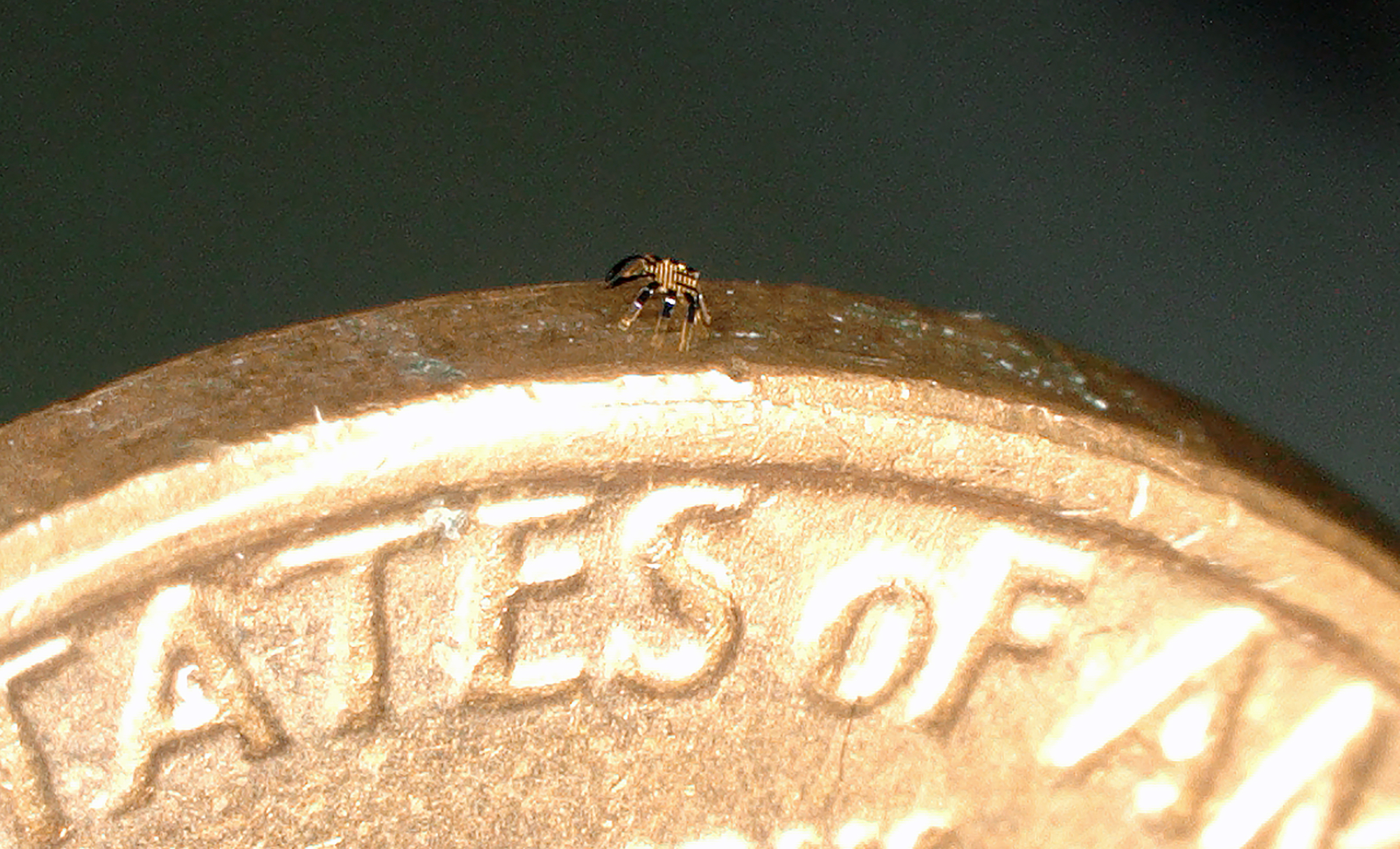

We may earn revenue from the products available on this page and participate in affiliate programs. Learn more ›
A new army of micro-robots just burst onto the scene. One of the stand-out forms is a peekytoe crab-shaped figure (with pincers) that’s less than 1 millimeter across. The details on the geometrically varied group are described this week in the journal Science Robotics.
The animal-like robots are distinguished by their very small size. The smallest ones are as wide as a human hair, and the larger ones are slightly smaller than a flea. They’re also available also as a scrunching inchworm, a spring-coiling cricket, and in other forms too. So why create them?
“There’s quite a bit of interest these days in tiny robots—small-scale structures that can be controlled remotely for various purposes. I think there’s a vision that they could be useful in surgical operations or for diagnostic purposes in the context of clinical medicine,” says John Rogers, a professor of materials science and engineering at Northwestern University, and an author on the paper. “What we’ve tried to do is put forward some ideas in terrestrial robots of that type that can add to the portfolio of capabilities that are developing in this emerging area of research.”

This hoard of mini robots Rogers and his colleagues designed are not programmed to do any specific tasks. And besides their wee size, what’s interesting about them is that they’re constructed and assembled in a similar way to silicon microchips.
[Related: The trick to a more powerful computer chip? Going vertical.]
“If you think about a silicon foundry or a setup of that sort, it involves a deposition of thin layers of materials and then patterning approaches that allow those materials to be structured with very high resolution on planar surfaces, typically, semiconductor wafers,” says Rogers. Unlike silicon chips, robots are intrinsically three-dimensional. But he and his team found a way to make them in a 2D form that pops up in 3D, like a “kid’s pop-up book in a sense.”

To make the robots, they first started with 2D stacks of patterned films and then bonded them in a specific way to a pre-stretched rubber substrate. “What happens when you relax the pre-stretch is that the rubber substrate imposes compressive forces on that flat pattern structure such that it buckles up,” Rogers explains. “Everything starts out planar and flat, and then through this buckling process we cause those material structures to move out of the plane into a 3D geometry that defines our inchworms or grasshoppers or crabs.”
That’s the structural component, or the skeleton, of the robot. Then comes the “muscles.”
The muscles are built out of a shape memory alloy material that can change shape in the presence of heat. In the crab form, these appear as blackened joints that sit on the junctions between each leg and the body. Repeated cycles of heating and cooling can cause various limbs on the robot to move back and forth and produce movement.

For controlling them remotely, lasers are a good option because they are high intensity and can be focused on very small spots, which allows for each individual limb to be controlled. And depending on how its limbs are heated, the robot can move in a corresponding fashion based on its structural design. The way that the laser scans across the body of the robot determines the sequence of movement in the legs, and the direction it goes in. When the researchers scan the laser from left to right, the crabby micro-robots move right to left.
“It’s remote-controlled in the sense that the pattern of illumination is determining the motion,” says Rogers. “It’s not remote controlled in the sense of an RC car being remote controlled because we don’t have an active radio built into the robot.”
In theory, you could control many of these robots at once with something like a laser light show with scanning mirrors and other fancy light tech. All they require is a direct line of sight.
Although this fabrication will work with almost any layout, the reason for the bio-inspired design may be reflection of the history of work that has come from Rogers and his collaborators, including a maple seed-like flying microchip, a fly’s eye camera, and artificial cephalopod skin that can camouflage.
Because the robots are fabricated like microelectronics, “it would be very easy to build into the robot’s bodies any kind of electronic circuit you can imagine,” Rogers says. “That will open up a lot of functional options in the future whether it’s sensing, or energy storage, or radio communication—all kinds of things follow from that.”
